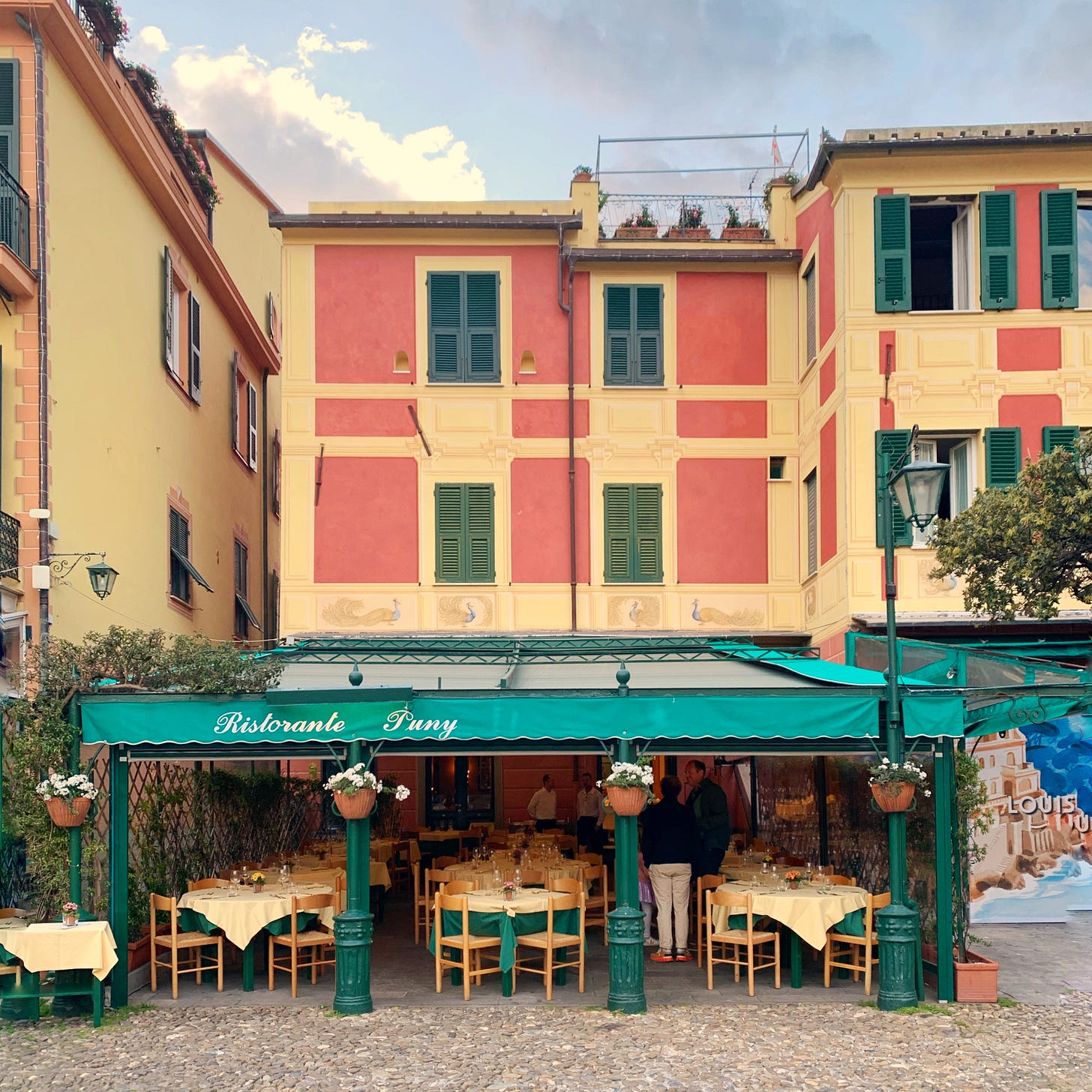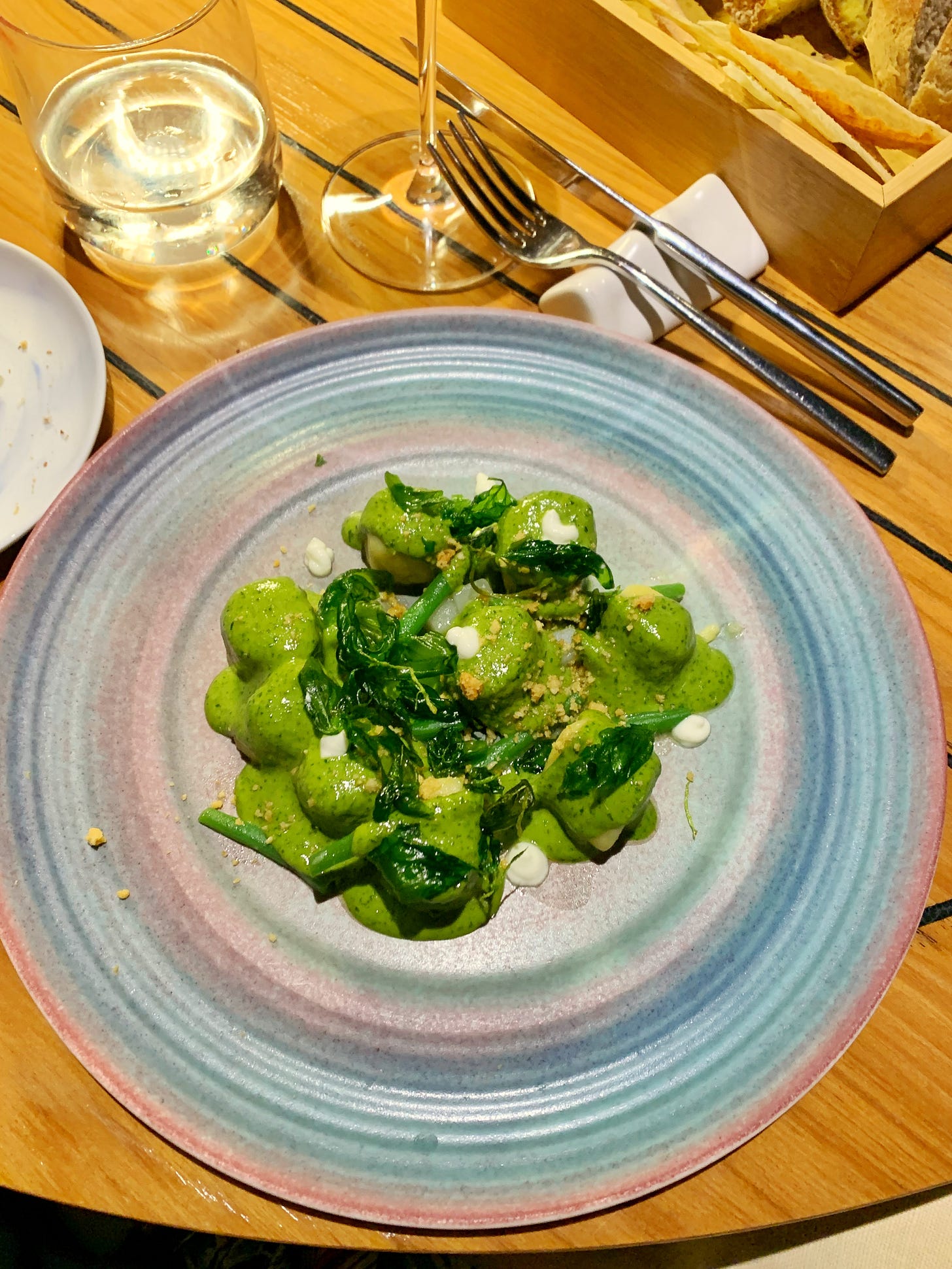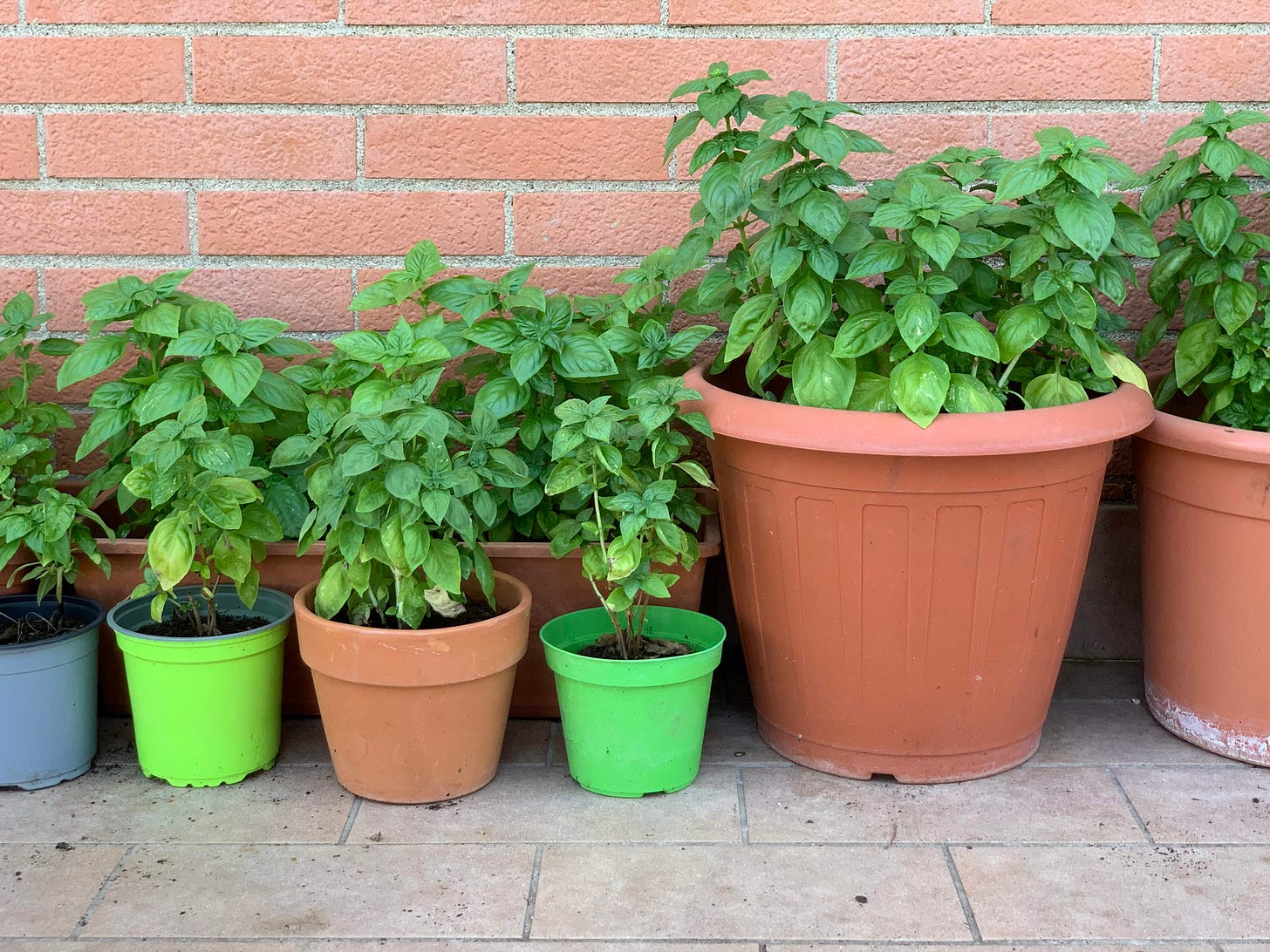Surely, you’ve had pesto. After tomato sauce, pesto—sometimes called pesto alla genovese—is one of the most ubiquitous Italian recipes. Like the explorers who set off from its native region of Liguria, the sauce has traveled all over the world. Yet in Italy, it’s not common to find pesto on menus in restaurants outside of Liguria, where it was invented.
So naturally, when my husband Marco and I passed through Liguria on a road trip to the French Riviera this spring, we had to try pesto in its native region. We only had two dinners in Liguria and I ate pesto at both of them, albeit two very different versions.
The first was the traditional version, made with trofie (a short, curled pasta), green beans, and potatoes, at Ristorante Puny in Portofino, the little fishing village made famous for la dolce vita in the 1950s and ‘60s. Right on the piazzetta overlooking the marina, Ristorante Puny opened in the 1950s and is a favorite of celebrities and other VIPs.
Even before we sat down, I already knew my order. Normally, I’m happy to share food with Marco so we can both get a taste of a few dishes, but when the waiter asked if we wanted to split the pesto (which I ordered) and the spaghetti with clams (which Marco ordered), I almost barked “Nooooooo!” I would have greedily scarfed up a full portion of that pasta.
The second version was a modern interpretation at Le Cupole, the elegant rooftop restaurant at the Grand Hotel Bristol in Rapallo, where we were staying. Rather than serve the pasta with potatoes, the chef had cleverly created a version of the dish with pillowy potato gnocchi and green beans topped with bright, flavorful pesto.
They say that the best basil comes from Liguria, so on the way back to Rome, we stopped at a nursery and bought an obscene amount of basil seedlings. Even after giving some to Marco’s mother and to our neighbors, we now have more than enough basil to get us through the summer—and pesto is one of our go-to dishes to make at home.
Sometimes I make it the traditional way—with trofie, green beans, and potatoes—and other times I simply use it to dress up some spaghetti or other long pasta. I also used it to replicate a sandwich called la tabarkina that we ate last summer in Carloforte (a town on a small island off the coast of Sardinia that was settled by Ligurian sailors), which has mozzarella, tomatoes, pesto, and tuna.
Having a good supply of fresh basil makes a huge difference. If you can, I highly recommend growing it yourself. In Rome, trofie are widely available in supermarkets, but if you can’t find them, you can substitute casarecce or another short pasta.
Trofie with Pesto, Green Beans and Potatoes
Serves 2
Ingredients:
200-250 grams (about 7-9 ounces) trofie or other short pasta
100 grams (3.5 ounces) green beans
120 grams potatoes (1 medium size potato)
35 grams (a little more than 1 ounce) basil
15 grams (1/2 ounce) pine nuts
35 grams (a little more than 1 ounce) olive oil
25 grams (a little less than 1 ounce) parmigiano reggiano
25 grams (a little less than 1 ounce) pecorino
1 small clove garlic
Salt
Directions:
Put a large pot of water on the stove to boil, then add a tablespoon of salt. You will boil the potatoes, green beans, and pasta in this pot, in three different steps.
In the meantime, wash the green beans and trim the ends off them. Peel the potato and cut it into small pieces. Boil the potato pieces for 5-6 minutes, until they’re al dente (soft but not mushy). Drain them and set aside. Boil the green beans until they’re al dente. If you’re using fresh green beans, it will take about 10-12 minutes. If using frozen green beans, they’ll be ready in 6-7 minutes.
In the meantime, prepare the pesto sauce. Traditionally, this was done using a mortar and pestle and indeed some people still do it this way. I’m sure they would be horrified by what I’m about to tell you. That’s right, I use a food processor. With apologies to the Ligurians, I use a little hand-held food processor and I think the result is still delicious. If you want to use a mortar and pestle, by all means, go to town, but if you want to take a shortcut like me, you’ll still get delicious pesto.
I start by putting the parmigiano, pecorino, and garlic into the food processor and blitzing them so the cheese becomes finely grated. I will take this chance to note that it’s always preferable to buy cheese in chunks and grate it yourself than to buy pre-grated cheese, which quickly loses its flavor. Traditional recipes call for pecorino sardo, but I use the more widely available pecorino romano.
At this point, I rinse the basil, pick the leaves off the stems, and add them to the food processor, along with the pine nuts and a generous helping of olive oil. The quantities above are what I found listed in Giallo Zafferano’s recipe, but to be honest I never measure this stuff. I just go by gut. If I start to blitz the ingredients and see that the sauce is too chunky, I add more olive oil to smooth it out. If I think it needs more basil, I add more basil. At this point, I taste it and add salt as needed (usually a pinch).
Next, toss the pasta into the pot of boiling water. As soon as I toss the pasta into the pot, I pour about half of the pesto sauce into a pan and begin to heat it over a low to medium flame, adding a ladle of pasta water, the green beans and potatoes, and stirring it all around.
If you’re using fresh pasta, it should only take two or three minutes to boil, at which point you can transfer it to the pan. If you’re using dry pasta, set a timer for the cooking time on the package minus three minutes. When the timer goes off, transfer the pasta to the pan and continue to cook it for the final three minutes, adding more pasta water and sauce as needed. Toss the pasta, add some more parmigiano, and serve.
Further Reading
For Noted by Quintessentially, I wrote about how to spend a perfect day in Portofino, which includes a plate of trofie with pesto at Ristorante Puny.
La tabarkina, the sandwich mentioned above, makes an appearance in my feature about Carloforte for Food & Wine.
Want to delve deeper into the story behind Ligurian pesto? Check out this longread published by Saveur, titled “A Journey to the Place Where Pesto was Born.”
You can see all the recipes in the archives here.









Your pesto recipe is very similar to mine 😊. Next time you come to Genoa we can make it together, in the mortar!
That sandwich sounds amazing!